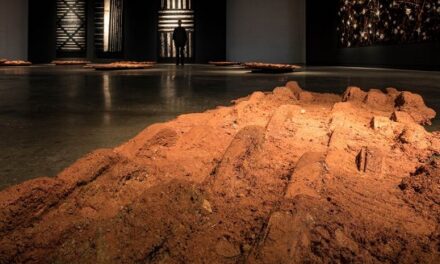John O’Brien has extended his reach a bit. O’Brien, a keyboard faculty member in the East Carolina University School of Music, is founder and sponsor of The Music House series of mostly early music and Baroque-era chamber music programs, but he also has put together jazz, folk and bluegrass music programs on occasion. And in early May, he brought Patrick Ball and Shira Kammen to Greenville to tell the legendary tale of Tristan and Iseult. “The Flame of Love: The Legend of Tristan and Iseult” is a program with a lengthy narrative and music drawn from the 12th through 16th centuries, using sources from England, Ireland, Brittany, Italy, France, Germany and Spain.
Ball is one of America’s best known Celtic harp players, and Kammen sings and plays a smaller harp and the vielle, a viola-like instrument with a bow that resembles an archer’s bow rather than a string musician’s bow. In addition to playing the brass-stringed harp, Ball becomes a storyteller — a troubadour — in this program, which is about six years old, while Kammen provides a variety of musical accompaniment with voice and instrument.
The musical selections chosen for the program (mainly by Kammen) blend seamlessly with the narrative and with each other, regardless of source, although most of the sung music is in the native language. Thus, the tunes sung by Kammen do not necessarily mimic or repeat in English the portion of the story being told by Ball, although the program notes show that the musical selections seem appropriate for the 10 “chapters” of Ball’s narration — during the final “The Death of Tristan” chapter comes the 14th century “Lamento de Tristan,” for example. And this program is not a long series of lively jigs, reels and flute and pipe tunes, nor does anyone beat a bodhran, such as you might hear in a concert by the Chieftains or Battlefield Band. In fact, only one selection from the Irish sources might have been recognizable to Celtic music fans: “Brian Boru’s March,” played mainly on Ball’s Celtic harp during the “Quest of the Lady With the Hair of Gold” chapter.
The program lasts nearly two hours, and Ball narrates in a rich, English accented voice (he is from California), with an occasional Irish brogue added for effect. The chapters recount the Tristan and Iseult tale of loyalty, deep love, misunderstanding and tragedy, as told from the perspective of a British Isles setting, mainly Cornwall and Ireland, with a little bit of Wales added. (Wagner’s Tristan und Isolde has a similar setting and storyline.)
Ball infuses the telling with occasional pauses used to great effect, and his inflection adds to the drama. His Celtic harp, made of maple, has particularly rich bass tones, used as both a foundation for the upper strings and as an occasional percussive device. The wide sound box helps the strings resonate nicely. The sound of Kammen’s medieval harp, which has gut strings, is lighter and smaller by comparison, and it provides an especially nice contrast when played in duet with Ball’s Celtic harp. The vielle has a rich tone not at all like that of an Irish fiddle; it adds a somber and more melancholy sound to the musical accompaniment. The vielle also can demonstrate musical intensity, as in the “Ghaetta” solo, and it offers a nice partnership with the Celtic harp and with voice. Kammen sings with a fine alto throughout, with a wide range of dynamics and emotion.
Only near the end did the storytelling bog down a bit, mainly because a second Iseult character was introduced (Iseult of the White Hands, who is not Iseult With the Hair of Gold), and one had to pay close attention to which Iseult was being referred to. And given the relatively small performance space in The Music House, a microphone was not necessary, especially considering the fullness of both voices and all instruments.
But the evening was quite enjoyable. Ball and Kammen provided a high-level entertainment, an interesting blend of music and spoken narrative not often heard. O’Brien scored well in scheduling this program.











